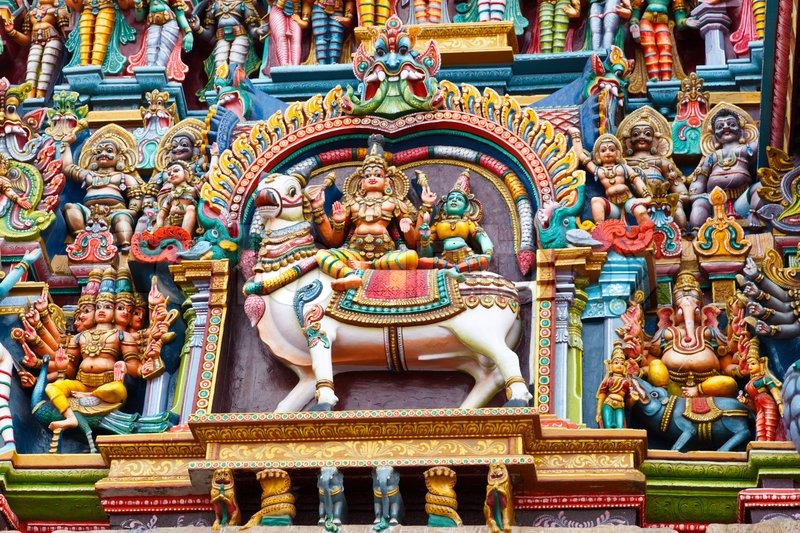The following is a talk presented at the Weatherhead Center for International Affairs, Harvard University, and is the first installment of a two-part series.
When I was invited to give this talk, my first reaction was “why me”? As a rather obscure and not very orthodox sociologist of religion from a second-tier West Coast teaching college, I wondered what I could contribute to your discussions. True, I had just edited a book on reflexive ethnography in the study of religion,[1] in which I was able to say some things that everybody knows – or ought to know if they think about them. My contributions to that volume has been combined with some epistemological musings and some rank speculation, which made sense to me at the time but which may or may not prove to be true. Your director, Rachel McCleary, seemed interested in that book rather than in my other work, so I have prepared something similar for you today. Given the time, I shall limit myself to deductions from the obvious and to epistemological musings – each taken a few intellectual steps beyond what I wrote nearly two years ago. You will have to decide for yourselves whether these cross over into rank speculation, though I don’t think they do. At any rate, I hope my remarks will prove worth the time that we are spending here this afternoon. I also hope they will encourage you to kick the social study of religion a bit farther in the direction that I think it ought to go.
I. The Obvious
The question I wish to pose is this: What makes ethnography more than just slow journalism in the study of religion? Specifically, what does ethnography have to offer the kind of transnational, macro-level study of religion that takes place at the Weatherhead Center? The obvious answer would seem to be “not much.”
A visit to the Center’s web site finds talk of “cross-country data sets,” society-wide promotion of religious “values and behaviors,” questions of whether “religiosity decline[s] as societies become richer and better educated,” and the like. All of these are macro-level questions; ethnography is notoriously concerned with micro-level processes. What can it hope to contribute?
A similar impression arises from scanning the list of “working papers.” Though some are case-based, most seem to seek a relatively high degree of generalizability. What can ethnography – that resolutely local, often apparently subjective and certainly partial approach to social life – contribute?
One of the classic joys of the anthropological life, after all, is being able to swat generalizers by saying, “Such talk is all very fine, but that’s not how they do things among the Mundugamor (or Tallensi or Jívaro or Brooklyners).” How can such episodic explorations help us understand religion (with a big “R”) in a transnational era? How does it help us relate big-R religion to big-L law, big-E economics, big-P politics, and the like?
The answer is by no means clear, and once we start to question ethnography’s potential contribution here, things get bad rather quickly. The title of my talk today captures one facet of this problem: the fact that ethnography is often little more than journalism without deadlines.
I first heard the term “slow journalism” from Rod Stark, who used it to disparage the small-scale, non-generalizing reporting-from-odd-places that passes for ethnography among most sociologists of religion. Ethnography is journalism, claims the phrase, because it focuses on particulars. It tells us what happens in such and such a place and in such and such a time.
But it does not generalize beyond that place and time – or at least it does not obviously do so. The term privileges theory in social science – and particularistic ethnography produces little of that. To call scholarship “journalism” is to say that it is not worth-while science.
Moreover, by calling ethnography slow journalism, the phrase highlights the fact that ethnographers can spend lots of years finding out very little. Pull away the talk of “habitus” and “postmodern moments,” of “representation” and “discourses” from more than a few research projects, and one is left with a story that would take a good reporter a couple of months to complete. To paraphrase Gertrude Stein, in too much so-called ethnography, there is little there there.
I shall present an epistemological counter-attack in due time, but, frankly, the term fits too many ethnographies of religion. One reason is a hidden parallel between reporting and sociological ethnography, imbedded in the latter’s origins.
Sociological ethnography grew out of the Chicago settlement house movement, as an attempt to figure out how poor immigrants could be turned into members of the middle class. To change them, one had to know them; hanging out on street corners and talking to the people there proved a pretty effective way to learn how they ticked. This was good reportage.
Much first-world ethnography tells us what marginal peoples think, how they live, why they do what they do. By taking us inside their heads, it removes their “otherness,” so we – and by this, I mean the educated middle and upper-middle classes – are thus more willing to see them as potentially “us.”
We embed this in our pedagogical practice, for most introductory sociology courses similarly seek to make marginalized “others” familiar. Good teachers rightly turn to works by journalists such as Jonathan Kozol, Alex Kotlowitz, or Adrian Nicole LeBlanc,[2] preferring their well-written accounts of poor people to sociological tomes that are drier without much better insight.
Among works on religion, few ethnographies surpass journalist Jon Krakauer’s recent exposé of Mormon Fundamentalists, though James Aho’s excellent work on Idaho Christian patriots is no less worthy.[3] Both take us inside the minds of their informants; both confront us with troubling judgments. Shouldn’t the scientist be doing a significantly better job?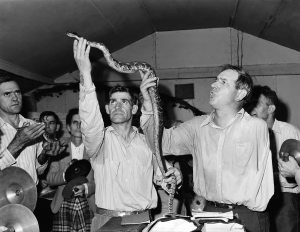
Of course, journalists do not always get it right. In a brilliant review of the literature on Appalachian snake-handling churches, Jim Birckhead shows how non-ethnographic accounts of this marginal religion construct “others” out of people who are really very much easier to understand.[4]
Serpent handlers are actually just like their neighbors: semi-rural, often poor, and victims of an economy that has bled their region of capital and concentrated it in outsiders’ hands. They drive pickup trucks, listen to country music, eat Southern foods, travel, and talk just like their neighbors. Yes, they take up serpents and drink poison in church, but most do so quite infrequently. In fact, says Birckhead, “remove the serpents, poison, and fire, and serpent handling is indistinguishable from the plethora of small, independent, Pentecostal and charismatic groups throughout the South, other parts of the United States, and around the world.”[5]
My point is simply that sociological ethnography, like good reporting, brings us face to face with other human beings. Cannot ethnography do more than this? Should it not do more than this? What differentiates good ethnography from good reporting, other than speed?
Anthropological ethnography, of course, was born in the Foreign Office and in the Bureau of Indian Affairs, not in the settlement house. Rather than seeking assimilation, it grew out of an interest in imperial control – an interest not always shared by the ethnographers!
British officials hoped to get natives to stop fighting and pay taxes, while American officials hoped to turn tribes into family farmers. French and Russians had similar agendas. Rulers needed data, so they hired ethnographers to record their subjects’ folkways, mores, and customs as well as their political structures, material accomplishments, and world views. Rulers hoped – correctly – that such “power/knowledge”[6] would help Europe dominate the world.
The solution here was not to make foreigners “just like us,” as that would force us to accord them rights. Anthropological ethnography focused on differences, in effect seeing “others” as restless natives or as exotic relics that need preserving. We have the power to poke our noses into their affairs; they do not have such power to investigate us.[7] As sociology was popularly imagined to ameliorate current social problems, anthropology was imagined as something of a salvage operation: powerful First-World academics defending those on the margins of the world economic system, while recording “native” traditions.
Not only has anthropological ethnography been forced to come to terms with these imperial origins; it has also had to confront the cultural sources of its disciplinary attractiveness. Simply put, a large percentage of young anthropologists enter the field out of a wish to give “natives” space to preserve their ways, just as a large percentage of young sociologists are moved by a wish to help the “less fortunate.” A bit of classroom ethnography – or perhaps just good reportage – makes this plain.
Anthropologists realized the implications of such things much earlier than did sociologists – a factor in generating the reflexive turn that anthropological ethnography has taken over the last two-and-a-half decades. This is one reason that I edited Personal Knowledge and Beyond: to let sociologists and other scholars of religion know what they had missed. As anthropologists have explored in some depth, representation and discourse do matter to ethnography, not least because ethnography is as much “writing about” peoples as it is the study of them.
Shawn Landres points out (in our volume) that there are at least eight levels of representation involved in each ethnographic encounter, and he notes that the discourses through which we conceive or fail to conceive of those representations shape both the products of our work and its social impact.[8] He and the other contributors to that volume show that ethnographers are more than just observed observers. Their (our) task is to bring cultural patterns to the surface – including those patterns that shape our own ethnographic practices.
Jim Birckhead does exactly this with his review of the discourses around snake-handling religions. Among other things, he shows how snake-handling is more significant for mainstream culture than it is for its practitioners. By resonating with our own “dark and abiding cultural obsessions with cults, inbred and degenerate hill people, fanaticism, danger, sex, and death,”[9] accounts that emphasize snake-handling tap into non-Southerners images of Appalachian otherness, in fact becoming an icon of that otherness in outsiders’ minds.
Ethnography – but not journalism – calls into question such cultural wishes. Journalism – but not good ethnography – takes its readers’ culture for granted.
Let me illustrate this with some of my own recent work, an ongoing ethnography of American religious peace-and-justice activism. It is an odd ethnographic project, not the least because it is not located in any one place. Though most of my informants live on the West Coast, their activist lives take place nationally and even internationally.
My work is thus located in a network, not a site. (Mary Jo Neitz’s ethnographic study of Wicca[10] highlights some of the ambiguities surrounding such unbounded religious groups, including the unsuitability of using the word “group” for the object of one’s investigations.)
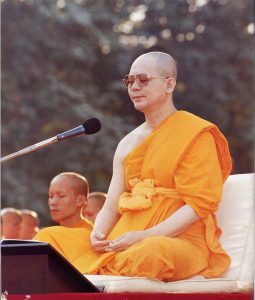 I find myself floating through my informants’ networks, studying issues loosely captured by the phrase “culture and identity.” First, peace-and-justice activists usually find themselves having to construct their own identities, both religious and activist, often in opposition to the identities pushed on them by their organized churches.[11] Second, they do so according to rather unconscious patterns, which are both like and not like the identity-forming patterns followed by others in our late-modern world. Despite cogent critiques of the term,[12] I still think that the word “culture” captures something important about the ways people shape (and are shaped by) the worlds that they imagine they live in.
I find myself floating through my informants’ networks, studying issues loosely captured by the phrase “culture and identity.” First, peace-and-justice activists usually find themselves having to construct their own identities, both religious and activist, often in opposition to the identities pushed on them by their organized churches.[11] Second, they do so according to rather unconscious patterns, which are both like and not like the identity-forming patterns followed by others in our late-modern world. Despite cogent critiques of the term,[12] I still think that the word “culture” captures something important about the ways people shape (and are shaped by) the worlds that they imagine they live in.
I have been engaged in this project for some time now, seemingly to little result; if I am “doing journalism,” it is thus exceedingly slow. A good deal of the sloth is situational and some is biographical. What it has allowed me to do, however, is to study non-activists’ reactions to my project – precisely the culture-of-the-audience that tells us something missed by mere object-centered investigation. What do I find?
Folks who hear about my study, including scholars, most typically give what I have come to call the “such heroes!” response. Many people think of religious social activists as heroes on two counts. First, they are heroes for their willingness to “put themselves on the line,” non-violently. Second, they are heroes for their religiosity – especially to certain quasi-secular left-liberals. (I shall say how in a moment.)
Let’s start with “putting themselves on the line.” The activists I interview have made major sacrifices for their activist careers, including, in many instances, jail time. Most people are not willing to go to jail for their beliefs, much less face physical danger. As my own parents told me ad nauseum, not only can civil disobedience force one to take an unscheduled sabbatical from one’s life; but the consequences of something as minor as “willfully and maliciously blocking a public street or sidewalk” can be severe – especially if one hopes to work for the government or large corporations, join a profession, or otherwise be part of the established middle class.
It may not be so apparent in Massachusetts or California, but much of our country has grown more repressive, not less, in the last few decades. My own minor record could keep me from public school teaching, for example, or from getting certain government grants – which would not have been the case before right-wing lawmakers bureaucratized their retribution.
Note that those who call social activists “heroes” are generally those who agree with the activists’ stance on a particular issue. Leftists honor anti-war protesters; the right-wing honors Operation Rescue and its kin. Even Cardinal Bernardine’s “consistent life ethic” has not brought these groups together; there is, for example, only one priest in the Los Angeles archdiocese who regularly works against both war and abortion.
Given the wide, but shallow support for leftist causes and the fact that right-wing “activists” can get quite well-paying jobs working for the Heritage Foundation and the American Enterprise Institute, one encounters more paeans to heroic leftists than to heroic rightists. Yet, those paeans are different, precisely because so much of the Left is secular or quasi-secular – and because its secularity is different from the traditional leftist anti-clericalism to which it is heir.
Clark Roof, among others, has charted a growing religious individualism in America, especially among baby boomers; Tom Beaudoin has tracked this among “Gen Xers.” Robert Bellah and his colleagues have noted the rise of what they call “Sheilaism” – individualized religions made up of personal preferences. Nancy Ammerman has suggested that the effort to craft a spiritually meaningful personal life may be a central aspect of post-modern individualism.[13]
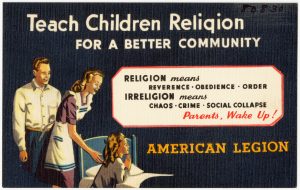 There is an authority gap in American religion, particularly on the left, but these and other scholarly observers note that the declining power of religious authority is not matched in the United States by a declining respect for “spirituality” – whatever that admittedly fuzzy term means. As the title of a recent book phrases it, many Americans consider themselves “spiritual but not religious.”[14] They feel drawn by “something higher,” something that they think used to be found in religions. But they do not themselves possess much religious conviction, nor are they willing to take on faith what religious leaders tell them.
There is an authority gap in American religion, particularly on the left, but these and other scholarly observers note that the declining power of religious authority is not matched in the United States by a declining respect for “spirituality” – whatever that admittedly fuzzy term means. As the title of a recent book phrases it, many Americans consider themselves “spiritual but not religious.”[14] They feel drawn by “something higher,” something that they think used to be found in religions. But they do not themselves possess much religious conviction, nor are they willing to take on faith what religious leaders tell them.
This is an unusual agnosticism, build on several certainties: the certainty that spiritual life matters, the certainty that it has something to do with living an ethical life, the certainty that individuals have to decide truths for themselves, the certainty that the country’s organized religions do not have the answers to life’s persistent questions.
Such people honor religious social activists precisely because they project onto those activists the certainties that they, themselves, lack. “Wouldn’t it be wonderful,” one can almost hear them say, “to be sure enough of one’s rightness to go to jail for it. Wouldn’t it be good to stand up for things about which one is certain. Maybe if I read about these heroes, I will become more like them.” So, they buy biographies and books of interviews, and read about the lives of these modern “saints.”[15] Many of these works are good journalism, but they are journalism all the same.
What kind of society do we live in, that reads Appalachian snake-handlers as uneducated degenerates and reads religious social activists – particularly peace-and-justice activists – as saints? What does it say about us that we presume that both of these groups are more religiously devoted than we are? What does it mean that we denigrate one and honor the other, but emulate neither?
Though I have not yet fully sorted out this question – otherwise, I would finish my book and make my publisher happy – I know that the “what heroes!” response tells me something important about American religious culture at the beginning of the 21st century.
Interestingly, it does the same in Europe, especially in Scandinavia and Germany, the parts with which I am most familiar. That supposedly secularized region is awash with spirituality, both individualized and group-oriented. Though their “what heroes!” response has different overtones, it rings some of the same bells.
At least the “what heroes!” folks are nice to me. Activists who hear about my study are often not so nice. Sometimes this amounts to competitive status-seeking; I hang out with one group in Los Angeles that introduces visitors by listing their arrest records, and mine is not very impressive. (I also don’t do party lines well, and this particular group has a definite party line.)
Other groups think I am a journalist, and react based on their past bad treatment. I respect this, having had my views distorted by journalists seeking a juicy quote on a deadline. The hostility usually dissipates, however, once my prospective informants learn that I am truly interested in what they have to say.
Note how I phrase that: “interested in what they have to say.” The activists that I interview are not always interested in the questions that I ask them, nor are they interested in filling in blanks in my knowledge. The best interviews seem to be those that blow my agenda out of the water, so to speak, substituting theirs. But I don’t mean just substituting their pre-formed agendas, the speeches that come out when one pushes their “on” buttons, which virtually amount to recorded announcements. (Activists, like professors, get good at this; it seems to be a hazard of our respective occupations.)
The conversations I mean are those that put both of our agendas in question, with my informants’ self-questioning taking the leading role and mine following. These conversations break every interviewing rule that I try to teach my students: about staying on topic, about not intervening with one’s own views, about seeking clarity. And they are richer for it.
I am still trying to figure out exactly what makes these encounters work so well; it has something to do with the way in which they force both my activist interlocutors and me beyond our current self-understandings. On their side, such conversations capture the activists in mid-thought, as they try to wrestle with their own deep life-questions. One set of interviews at a Catholic women’s peace-and-justice center, for example, quickly got beyond the women’s anger at the male-dominated institutional church to explore the ritual life that these women had built among themselves.
One Center staffer, who said “it would be easier to change the color of my eyes or to get a new genetic code than it would be to stop being a Roman Catholic,” now found her Catholic tradition only valuable when practiced with her Center sisters – a practice that combined Jewish, Native American, Zen and Tibetan Buddhist, and, yes, Catholic elements, in seemingly equal proportions. Her account of her search for ritual meaning put my own religious life in question; my willingness to question my way of being encouraged her to open hers to further self-examination and development. Both of us left that conversation changed.
The issue here is more than just the fact that survey data, church attendance figures, and the like would not count this woman as institutionally religious, and would thus miss some key features of the contemporary religious scene. (I shall return to this point a bit later.) More important is both her and my thirst for expanding our personal horizons, and the fact that both her activism and my more-than-academic interest in it are tied up in this yearning.
It strikes me that one of the distinguishing marks of these religious social activists is just the opposite of what the “what heroes!” crowd expects: these people don’t have answers, they are making up their lives as they go along, and the only constant is that they insist that those lives be meaningful. Their “religiousness” consists precisely in their taking seriously the idea that God demands something of them, clues to which can be found in their religious traditions. Clues, but not answers.
Most peace-and-justice activists, especially Catholics, are so alienated from their churches that they leave almost nothing unquestioned. Not even God, to put a traditional label on whatever it is that they hear calling them. A constantly evolving mix of alienation, devotion, action, and passion, their inner lives are turbulent but fulfilling.
Perhaps many of them are like the Quaker/Buddhist activist I interviewed, who described her activism as an appendage of her spiritual life: “When some injustice bothers me, I cannot sit in stillness,” she told me. “Sitting meditation is the center of my life. I have to work to overcome that injustice so that I can meditate again.”
What is it about our society that calls forth such yearning, both in religious social activists and in ourselves? What does this say about the shape and direction of contemporary religion? My ethnographic investigations are only beginning to make these questions clear. The answers will, I am afraid, be some time coming.
Here, then, is the first-level answer to my question about the contrast between ethnography and slow journalism in the study of religion. Journalism enters the field with clear concepts and objectives, it examines the people on whom it is reporting, and it reports. Good.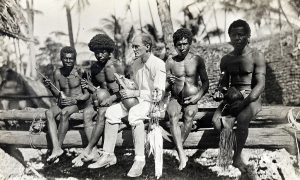
Ethnography enters the field in an attempt not so much to examine these people as to explore what we and they have to tell each other. This is a deeper sort of equality than is usually envisioned.
“The field” does not just consist of “the natives,” but also includes our wish to learn about them, the cultural sources of that wish, and what we learn about both native society and own through our encounters. This requires good reporting, but it also requires reflexive self-consciousness. It requires us to treat ourselves as our objects of study, alongside our informants. Would that all so-called ethnographies of religion were this self-conscious in practice.
James V. Spickard, Professor of Sociology, University of Redlands. Paper presented for the Project on Religion, Political Economy, and Society Weatherhead Center for International Affairs Harvard University, presented September 24th, 2003. Please send queries and comments to jim_spickard@redlands.edu.
[1] James V. Spickard, J. Shawn Landres, and Meredith B. McGuire, eds, Beyond Per-sonal Knowledge: Reshaping the Ethnography of Religion (New York: NYU Press, 2002).
[2] Jonathan Kozol, Rachel and Her Children: Homeless Families in America (New York: Crown Publishers, 1988); Alex Kotlowitz, There Are No Children Here: The Story of Two Boys Growing Up in the Other America (New York: Double-day, 1991); Adrian Nicole LeBlanc, Random Family: Love, Drugs, Trouble and Coming of Age in the Bronx (New York: Scribner, 2003).
[3] Jon Krakauer, Under the Banner of Heaven: A Story of Violent Faith (New York: Doubleday, 2003); James A. Aho, The Politics of Righteousness: Idaho Christian Patriotism (Seattle: University of Washington Press, 1990).
[4] Jim Birckhead, “Reading “Snake Handling”: Critical Reflections,” in Anthropology of Religion: A Handbook, ed. Stephen D. Glazier (Westport, CT: Greenwood Press, 1997), 19-84.
[5] Birckhead, “Reading,” 32.
[6] Michel Foucault, Power/Knowledge: Selected Interviews and Other Writings, edited by Colin Gordon (New York: Pantheon Books, 1980).
[7] See Clifford Geertz, “Deep Hanging Out,” New York Review of Books, October 22, 1998, 72.
[8] J. Shawn Landres, “Being (in) the Field: Defining Ethnography in Southern California and Central Slovakia,” in Personal Knowledge and Beyond: Reshaping the Ethnography of Religion, ed. James V. Spickard, J. Shawn Landres and Meredith B. McGuire (New York: NYU Press, 2002), 100-12.
[9] Birckhead, “Reading,” 33.
[10] Mary Jo Neitz, “Queering the Dragonfest: Changing Sexualities in a Post-Patriarchal Religion,” Sociology of Religion 61, no. 4 (2000): 369-91; Mary Jo Neitz, “Walking Between the Worlds: Permeable Boundaries, Ambiguous Identities,” in Personal Knowledge and Beyond: Reshaping the Ethnography of Religion, ed. James V. Spickard, J. Shawn Landres and Meredith B. McGuire (New York: NYU Press, 2002), 33-46.
[11] See Meredith B. McGuire and James V. Spickard, “Narratives of Commitment: Social Activism and Radical Catholic Identity,” Temenos: Studies in Comparative Religion 37-38 (2003): 131-49.
[12] E.g.: Renato Rosaldo, Culture and Truth: The Remaking of Social Analysis (Boston: Beacon Press, 1989).
[13] Wade Clark Roof, Spiritual Marketplace: Baby Boomers and the Remaking of American Religion (Princeton, NJ: Princeton University Press, 1999); Tom Beaudoin, Virtual Faith: The Irreverent Spiritual Quest of Generation X (San Francisco: Josey-Bass, 1998); Robert N. Bellah, et al., Habits of the Heart: Individualism and Commitment in American Life (Berkeley: University of California Press, 1985); Nancy T. Ammerman, “Organized Religion in a Voluntaristic Society,” Sociology of Religion 58, no. 3 (1996): 203-15.
[14] Robert C. Fuller, Spiritual, but not Religious: Understanding Unchurched America (New York: Oxford University Press, 2001).
[15] E.g.: Catherine Ingram, In the Footsteps of Gandhi: Conversations with Spiritual Social Activists (Berkeley: Parallax Press, 1990); Pam McAllister, You Can’t Kill the Spirit (Philadelphia: New Society Publishers, 1988).
